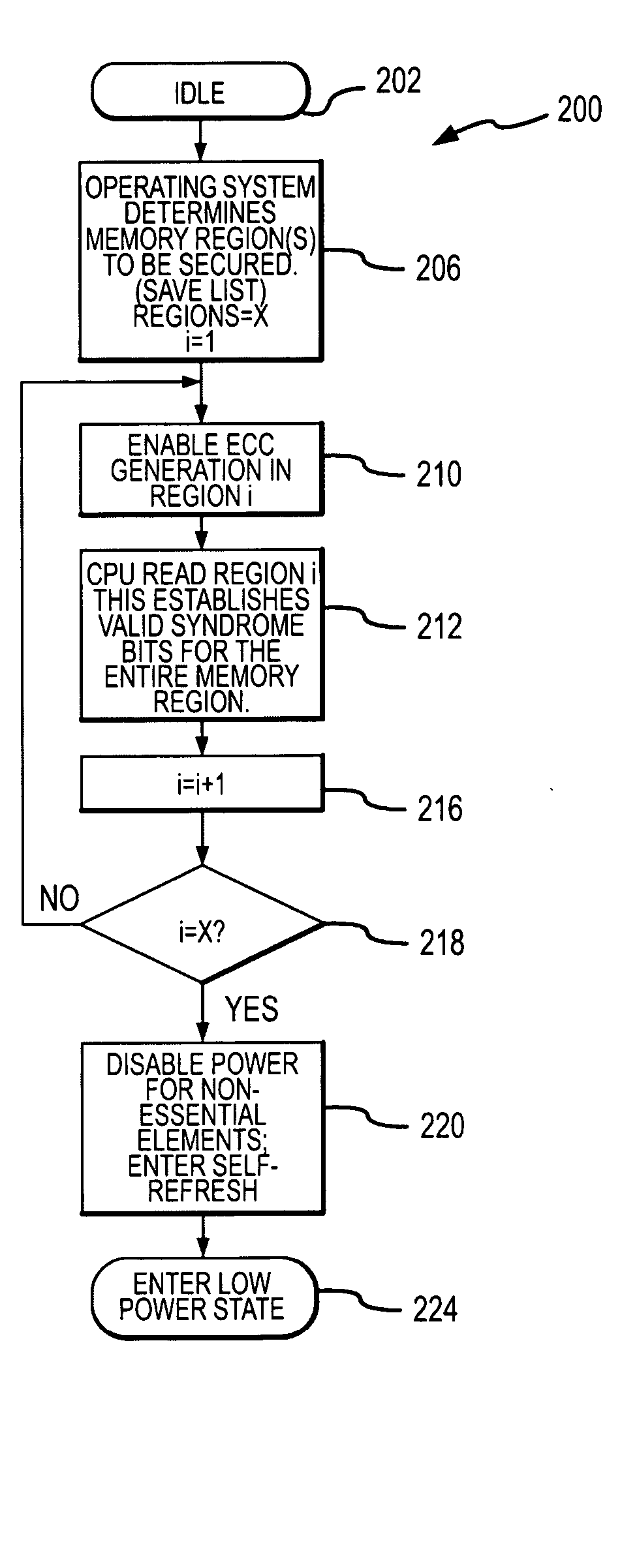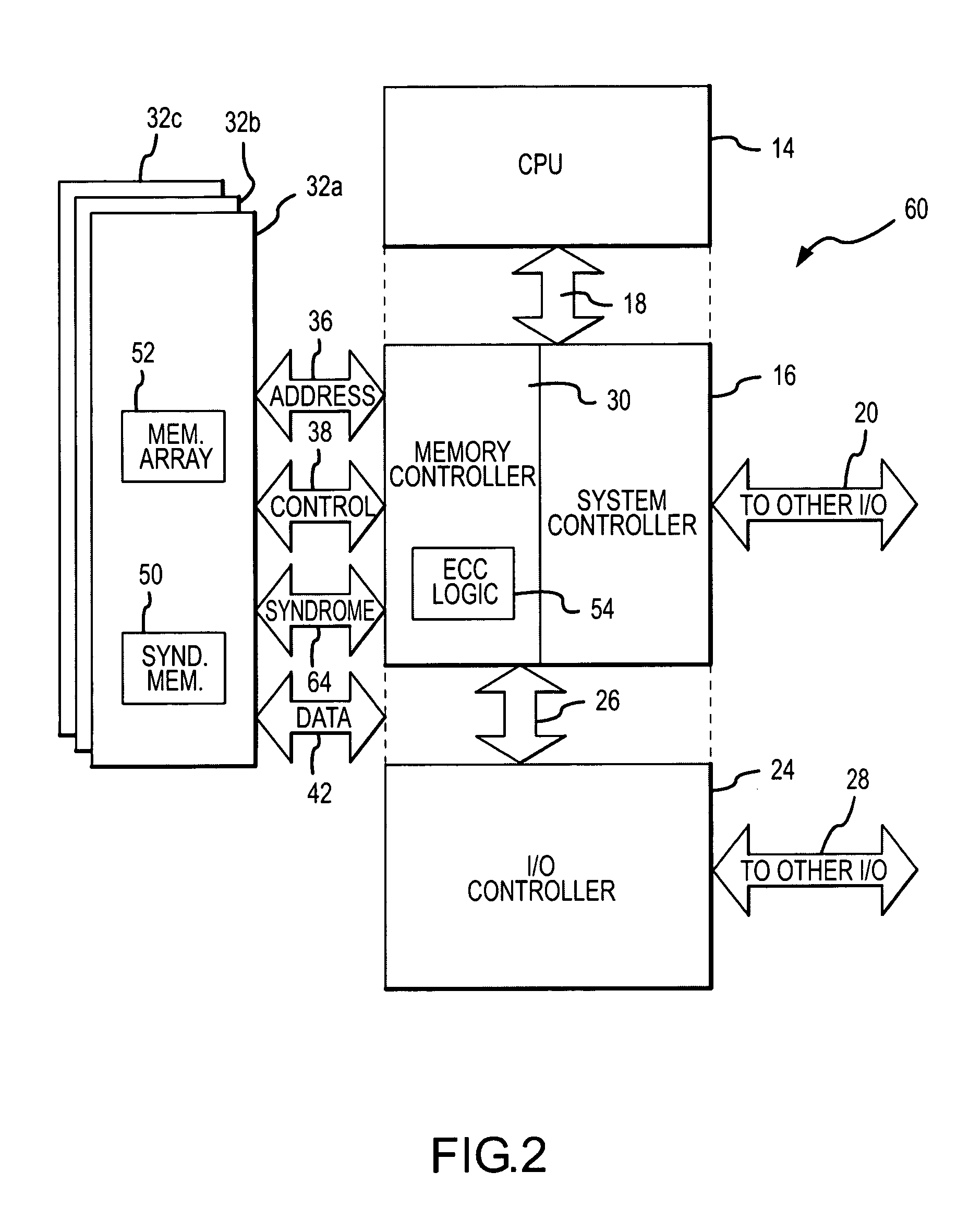Memory system and method having selective ECC during low power refresh
a memory system and low power refresh technology, applied in error detection/correction, error avoidance, instruments, etc., can solve the problem that data retention errors can be expected to occur during refresh, and achieve the effect of reducing power rate, reducing power rate, and reducing power ra
- Summary
- Abstract
- Description
- Claims
- Application Information
AI Technical Summary
Benefits of technology
Problems solved by technology
Method used
Image
Examples
Embodiment Construction
[0017] A computer system 10 according to one embodiment of the invention is shown in FIG. 1. The computer system 10 includes a central processor unit (“CPU”) 14 coupled to a system controller 16 through a processor bus 18. The system controller 16 is coupled to input / output (“I / O”) devices (not shown) through a peripheral bus 20 and to an I / 0 controller 24 through an expansion bus 26. The I / O controller 24 is also connected to various peripheral devices (not shown) through another I / 0 bus 28.
[0018] The system controller 16 includes a memory controller 30 that is coupled to several dynamic random access memory (“DRAM”) device 32a-c through an address bus 36, a control bus 38, and a data bus 42. The locations in each of the DRAMs 32a-c to which data are written and data are read are designated by addresses coupled to the DRAMs 32a-c on the address bus 36. The operation of the DRAMs 32a-c are controlled by control signals coupled to the DRAMs 32a-c on the control bus 38.
[0019] In oth...
PUM
 Login to View More
Login to View More Abstract
Description
Claims
Application Information
 Login to View More
Login to View More - R&D
- Intellectual Property
- Life Sciences
- Materials
- Tech Scout
- Unparalleled Data Quality
- Higher Quality Content
- 60% Fewer Hallucinations
Browse by: Latest US Patents, China's latest patents, Technical Efficacy Thesaurus, Application Domain, Technology Topic, Popular Technical Reports.
© 2025 PatSnap. All rights reserved.Legal|Privacy policy|Modern Slavery Act Transparency Statement|Sitemap|About US| Contact US: help@patsnap.com



